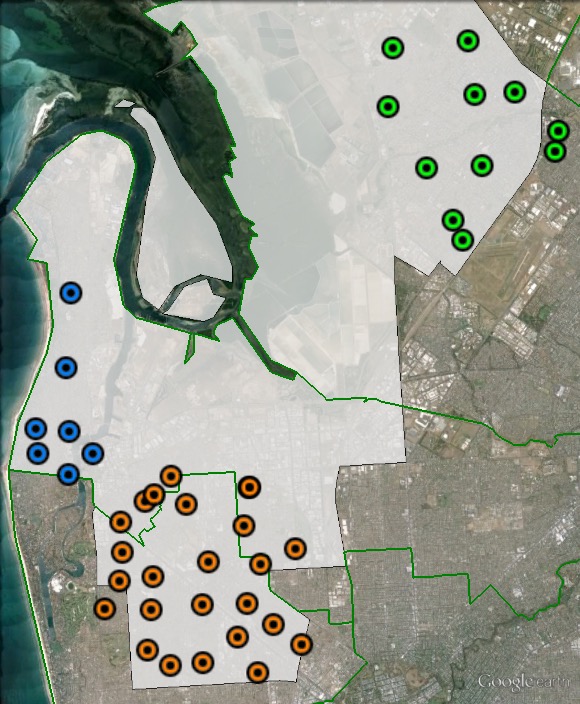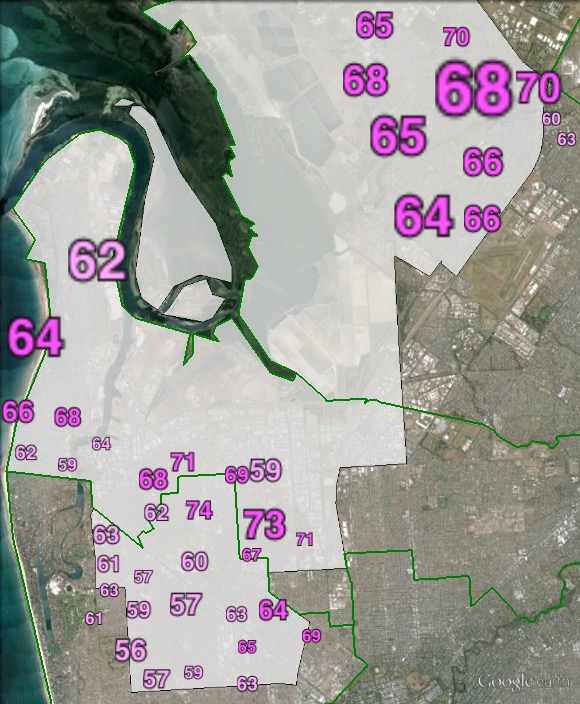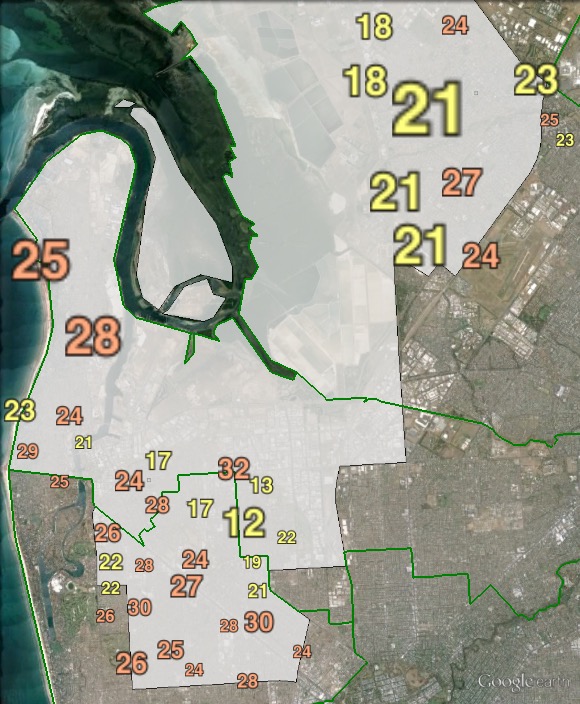ALP 14.0%
Incumbent MP
Mark Butler, since 2007.
Geography
Port Adelaide covers the northern suburbs of Adelaide, including the port itself. It includes the suburbs of Seaton, Woodville, Croydon, Cheltenham, Semaphore, Largs Bay, Green Fields and Salisbury.
History
Port Adelaide was created as part of the expansion of the House of Representatives at the 1949 election, and has always been held by the ALP.
Port Adelaide was first won in 1949 by Labor candidate Albert Thompson. Thompson had previously won the seat of Hindmarsh in 1946, and before that had been a state Labor MP since 1930. Thompson held Port Adelaide until his retirement at the 1963 election.
He was succeeded by Fred Birrell, who held it until 1974. He was succeeded in 1974 by former ALP National Secretary Mick Young, the architect of Gough Whitlam’s 1972 election win. Young played a key role in the Labor frontbench during the Fraser government, and was appointed to Cabinet after Bob Hawke’s election win in 1983. He was forced to briefly step down in 1984 after breaching Cabinet security, but was later reappointed. He continued in Parliament until 1988, when he resigned over accusations of mishandling of campaign donations.
The 1988 by-election was won by Rod Sawford. Sawford served as a Labor whip from 1994 until 2001, and was a critic of Kim Beazley during his leadership contests against Simon Crean and Mark Latham. Sawford retired at the 2007 election, and was succeeded by Mark Butler, the head of the Labor Left faction in South Australia.
Butler was appointed as a Parliamentary Secretary in a 2009 reshuffle, and joined the frontbench after the 2010 election. Butler was re-elected in Port Adelaide in 2010 and 2013.
Candidates
- Matthew Carey (Greens)
- Bruce Hambour (Family First)
- Janine Clipstone (Animal Justice)
- Jenalie Salt (Christian Democratic Party)
- Mark Butler (Labor)
- Emma Flowerdew (Liberal)
- Michael Slattery (Nick Xenophon Team)
Assessment
Port Adelaide is a very safe Labor seat.
2013 result
| Candidate | Party | Votes | % | Swing |
| Mark Butler | Labor | 46,024 | 50.6 | -4.0 |
| Nigel Mckenna | Liberal | 23,955 | 26.3 | +3.3 |
| Dusan Popovic | Greens | 7,834 | 8.6 | -6.5 |
| Bruce Hambour | Family First | 6,843 | 7.5 | +0.3 |
| Ngoc Chau Huynh | Palmer United Party | 5,227 | 5.7 | +5.7 |
| Terry Cooksley | Australia First | 1,116 | 1.2 | +1.2 |
| Informal | 6,020 | 6.6 |
2013 two-party-preferred result
| Candidate | Party | Votes | % | Swing |
| Mark Butler | Labor | 58,261 | 64.0 | -6.9 |
| Nigel Mckenna | Liberal | 32,738 | 36.0 | +6.9 |

Booth breakdown
Booths have been divided into three areas: north, south and west. Polling places in Salisbury local government area have been grouped as “North” – these booths are geographically isolated from the rest of the electorate’s population. Those in “West” are all close to the coast, with those in “South” more inland. Polling places in Charles Sturt local government area are all included in South, while those in Port Adelaide Enfield are split between West and South.
The Labor two-party-preferred vote was just under 64% in the south and west, and 66.5% in the north.
Nick Xenophon’s Senate vote ranged from 21.8% in the north to 25.5% in the west.
| Voter group | XEN % | ALP 2PP % | Total votes | % of votes |
| South | 23.5 | 63.7 | 32,618 | 35.8 |
| North | 21.8 | 66.5 | 24,961 | 27.4 |
| West | 25.5 | 63.6 | 12,649 | 13.9 |
| Other votes | 20.4 | 61.8 | 20,771 | 22.8 |




Morgan says Labor 35%, Lib 25%, NXT 15%, Greens 12%, Others 12.5%.
Apparently a straight swap of Labor votes to NXT. Again, it’s a bit hard to believe no real change in the Lib vote.
But then again, it is probably already near rock-bottom anyway.
My prediction: Easy ALP hold.
Labor will win this seat, but there is a contest to see who will finish a very distant second between Liberal and NXT. Xenophon’s candidate is now only 30 or so votes behind on raw primaries.
NXT has indeed moved into second place on primaries at least, so it would seem to me that they will make the 2CP cut here.
AEC are now re-calculating this as a Labor vs NXT contest.